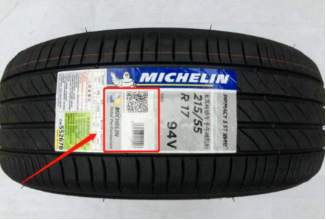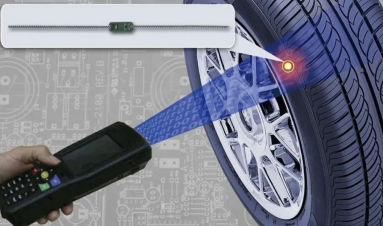- Enterprise dynamic
- Industry news
Industry news
A new wave of "RFID+" tags is coming, have you got these new applications?
A new wave of "RFID+" tags is coming, have you got these new applications?(This article is excerpted from WeChat official account: tag technology)
With the digital and intelligent transformation becoming a global "new wave", RFID smart tags have gradually become a hot area of focus in the label industry. According to research conducted by AIoT Star Map Research Institute, the global shipment of passive RFID tags is expected to reach 39 billion in 2023, and the smart tag market is rapidly developing at an annual growth rate of 20%.
However, the homogenization of RFID tags and the diversification of market demand have brought significant challenges to label printing companies. Customization has become an important trend in the development of the label industry, and RFID tags with stronger integration capabilities and better ability to meet the rich needs of the market have become a "new advantage" for smart tags to stand out. So, what innovative label applications have emerged so far? What are the innovative product forms of RFID tags?
01 Medical cold chain transportation
RFID temperature sensing tags are widely used in medical cold chain transportation, as they can monitor temperature in real-time and trace medical supplies, making them widely used in the medical field. Especially in the just past COVID-19 epidemic, the demand for vaccine injection has greatly increased, making it necessary to strictly control the ambient temperature during transportation, otherwise it may lead to inactivation and invalidation of the vaccine. The use of RFID temperature sensing tags can simultaneously achieve two important functions: temperature monitoring and drug traceability, solving the problem of chain breakage in pharmaceutical cold chain logistics.

02 Patient temperature monitoring
In addition to its application in pharmaceuticals, RFID temperature sensing tags are also used in the medical field for monitoring patients' body temperature. Hong Kong Yan On Hospital wears RFID temperature sensing tags on the abdomen of patients, and utilizes RFID readers and data storage software installed on the ward walls to achieve real-time automatic collection of patient temperature data. In addition, when the patient's body temperature rises above the set threshold, the system will activate an automatic alarm device, and can predict the trend of body temperature changes, enabling the patient to receive timely treatment.

03 Blood Management System
Blood management has always been a challenge in the medical field, not only involving complex processes such as testing, blood collection, storage, and patient use, but also making management even more difficult due to the strict conditions of blood storage. By leveraging the advantages of RFID smart tags, intelligent and simplified management of blood can be achieved. Add RFID temperature sensing tags to the blood bag to achieve data management throughout the entire blood process. At the same time, the temperature sensing function can monitor the blood storage environment and quality in real-time, effectively assisting in blood management.

04 Power maintenance system
Important equipment such as high-voltage switchgear, high-voltage cables, and high-voltage cable joints in the power system may experience issues such as equipment aging, corrosion, and loose fastening bolts due to long-term operation in extreme environments. In addition, many power equipment can easily cause temperature anomalies due to long-term high load operation.
Add RFID temperature sensing tags to power equipment to monitor the normal transportation of the electrical system, while also recording temperature in real-time at key nodes such as bolts and dynamic and static contacts, and conducting safety warnings based on big data analysis. It can detect and handle problems in a timely manner, avoiding safety accidents such as melting, combustion, and even explosions.

05 Car tire labels
The application of RFID tags on tires is also becoming increasingly widespread, with suppliers such as Goodyear, Michelin, and Bridgestone already using RFID technology on tires. In addition to functions such as tire identification, product traceability, and data recording, it can also be endowed with new functions such as measuring pressure and temperature in terms of safety.
An RFID tag for wireless tire temperature and pressure monitoring is installed near the tire inflation door. The sensing tag relies on the vehicle's battery power to wirelessly transmit the measured tire temperature and pressure values to the receiver, monitoring the vehicle's performance and ensuring driving safety. However, currently, the product has high technical requirements, long testing cycles, high testing costs, high safety standards, and relatively significant technical challenges.


06 Battery passport
In order to promote the construction of a full lifecycle data management system for power batteries, the battery "passport" has been proposed as an international industry initiative. The "passport" aims to provide detailed information about batteries, including their source, manufacturing process, technical specifications, carbon footprint, and ESG indicators. In the future, it will drive the market scale of RFID tags for batteries to reach billions or even more.
RFID technology in the battery industry is not only for product identification, but also has a higher demand for internal monitoring of battery conditions, safety and reliability, and the ability to cope with various complex environments (such as extreme high or low temperatures). This requires RFID current sensing tags to monitor the internal status of the battery in real-time, greatly improving the safe use of the battery.

07 Food transportation decomposition
Set up two RFID tags on each box containing food, with each tag encoded with a unique ID number. Every time the box is moved, the reader captures the ID number of the corresponding label and transfers the data to the server for filtering and processing, and then transfers it to the warehouse management software. The food box can be reused.
By using RFID tags, not only can the condition and location of the container be monitored in real-time, but also the whereabouts of the container, the number of times the container enters and exits the container, and the number of times the container enters and exits the container can be monitored.

08 Wiliot IOT Pixels
Wiliot has innovatively developed a passive Bluetooth low-power sensor tag, which is only the size of a stamp and has the characteristics of low cost and self powered. It can sense a series of physical and environmental data and transmit the information to gateways, mobile phones, or devices that support low-power Bluetooth (BLE), and then send it to the Wiliot cloud platform to convert the data into actionable insights.
Generally speaking, RFID tags only respond and transmit data when the reader or writer emits a query signal, which is a passive form of feedback; But as long as the Wiliot tag can capture RF signals, it can actively report perception data. At the same time, the barrier of item information that cannot be autonomously perceived by passive RFID tags has been broken, and the integration of sensing, communication, and computing has been achieved. Without the need for readers to write item information, active perception of item related information can be achieved.

It can be seen that RFID tags have quietly penetrated into various industries and contain huge market potential. Looking forward to more innovative technologies integrating into the production and manufacturing of RFID smart tags in the future, providing more "new choices" for diverse market demands.






